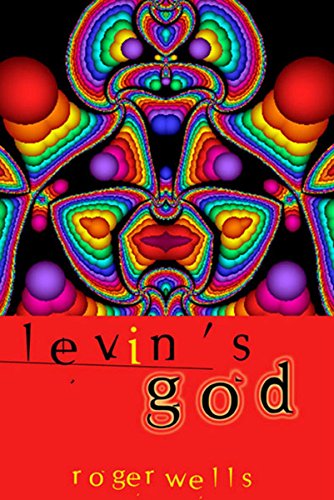
- Free Article: No
- Contents Category: Fiction
- Custom Article Title: Imperfect Days
- Review Article: Yes
- Article Title: Imperfect Days
- Online Only: No
- Custom Highlight Text:
Levin’s God is a two-part epic. The first half is a take on the Australian rock scene of the late 1970s and early 1980s. Singer-guitarist Levin Hoffman, on the strength of what people say are ‘great songs’, rapidly takes his band the Barking Dogs to the top of the charts. Levin – believe it or not – finds that success is hollow and that not even his devoted Indian-Australian girlfriend, Shelley, or his long-time friend-cum-manager, Lawrence, can rescue him from his indefinable angst. The second half of the book sees Levin in Thailand, where, lying low at a monastery after witnessing a horrific murder, he becomes a devotee of meditation.
As Roger Hart, Roger Wells was the male lead in the group Little Heroes (not to be confused with their contemporaries, Little Murders), a Melbourne band that spent the first half of the 1980s making interesting rock records. They had a top ten hit, ‘One Perfect Day’, in 1982, which complemented the ‘new wave’ without alienating fans of more established music. Wells now works as a counsellor and has written a book on meditation, so one assumes that Levin’s God is built on a skeleton of experience, though much of the experience seems casually remembered. Tellingly, it is the travail of meditation and Levin’s struggle to purge his own desire and pain through meditative enlightenment that are most credible.
- Book 1 Title: Levin's God
- Book 1 Biblio: FACP, $29.95 pb, 462 pp
- Book 1 Cover Small (400 x 600):

- Book 1 Cover (800 x 1200):

Punkily, Wells fills the novel with observations he might consider, with the gnarled wisdom of middle age, to be classic non-PC diatribes, such as ‘aside from surface idiosyncrasies, Thai bar girls mostly look alike. Perfect sex toys.’ At a stretch, these might well be appropriate opinions for a narcissistic misogynist like Levin, but the stereotyping of particular races also comes from the narrator, perhaps most boldly in the scene describing the gangland slaying of Lawrence’s German business partner, Kurt. The shooting of Kurt in the head interrupts Levin’s reading of a newspaper article about attempts to identify the skull of Joseph Mengele. That a connection is intended is undoubtable: the depth to which Wells wants readers to go is, however, uncertain.
There are many troublesome quirks in this book’s historical authenticity, particularly in terms of the sums of money being thrown around – far too large for an established group of the time, let alone for the Barking Dogs, which has come from nowhere. Wells, via Levin, still seems amazed that ‘great songs’ do not entitle their creator to financial stability in the music industry. But the notion that Levin and his cronies, a few shows into their career, are suddenly put on a wage of $400 each is unlikely for Melbourne, circa 1979; even more improbable is that they should complain about it. Wells also displays too much hindsight in the little details – there was no such thing, for instance, as an ‘affluent inner suburb of Melbourne’ in the late 1970s. Lawrence’s line on changing syringes because of ‘AIDS, man, it’s a new disease’ seems temporally appropriate but impossibly flippant. While the red light that’s permanently on in front of the house that Levin, Shelley and Lawrence share leads them to call it the ‘Lighthouse’, you would think that one among such dirty realists would bother to mention that a red light is also a common sign for a brothel.
The names are also peculiar. Why ‘Levin’? True, there are minor similarities between Levin Hoffman and Konstantin Dmietrivitch Levin: both are amateur intellectuals prone to impetuous embracing of ideology. But that doesn’t explain ‘Lawrence’ and ‘Shelley’, let alone the minor characters ‘Churchill’ and ‘Whistler’. And is the name of the ‘music industry lawyer’, Derek Bailey, a reference to the English improvisational guitarist?
These questions need not detract from the fine qualities of Levin’s God. These appear most notably in the middle section, which details Levin’s breakdown before his move to Thailand, where we encounter Levin’s complicated alter ego, punk singer Johnny Stab, for the last time, shooting up with his pregnant girlfriend in the Lighthouse kitchen. Levin experiences revelation in scenes reminiscent of both Don De Lillo’s portrait of a famous rock recluse in Great Jones Street (1973), and the thuggery-meets-decadence of Nicholas Roeg’s Performance (1970). While the book’s segue into a seedy Thai underworld is possibly regrettable (is this really two novels?), Levin’s complicated search for enlightenment feels engagingly honest and almost noble.


Comments powered by CComment